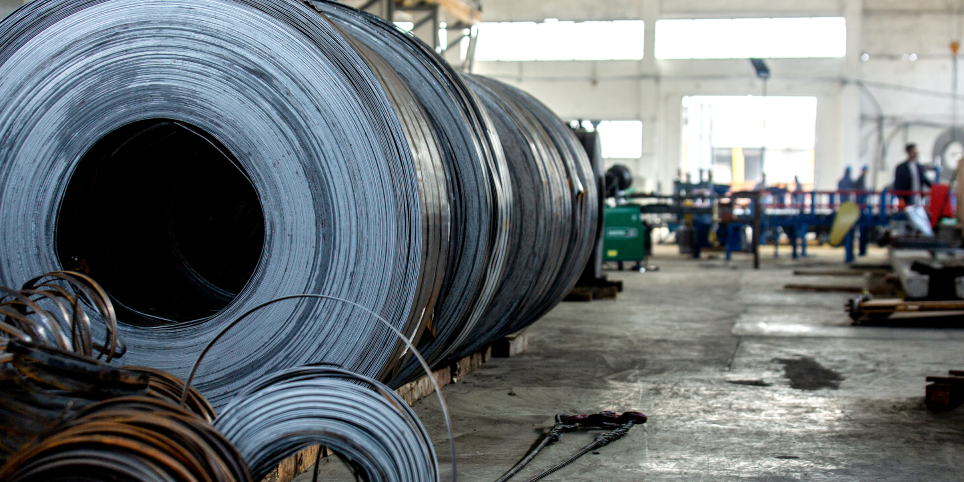
Which Are Six Waves of the Innovation Cycle That Structured the Global Economy
We have gone through phases of evolution cycles. From being primitive to being modern, we have come a long way. The global development that started with the industrial revolution, after undergoing a series of innovation phases, is geared up for sustainable development.
Austrian-born economist Joseph Schumpeter gave the theory ‘The gale of creative destruction,’ in 1942. Schumpeter’s gale stated that industrial mutation is a continuous process revolutionizing the economic structure from its core; with non-stop destruction of the old and non-stop creation of the new. This theory can define innovation the best.
Innovations are vital, we all know. But some innovations played a major role in building the structure of the global economy. Technological evolutions were simultaneous; one innovation led to the other. This outlined a phase of the innovation cycle: a period in which that technology evolved, developed, and diffused.
Technological innovations and economic growth go parallel with each other. Let us delve deeper into the six waves of the innovation cycles, and how they structured the global economy.
The six waves of the Innovation Cycles:
| Long waves | Period | Duration | Breakthrough Technologies | ||
|---|---|---|---|---|---|
| First wave | 1785 to 1845 | 60 years | Water | Textile | Iron |
| Second wave | 1845 to 1900 | 55 years | Steam | Steel | Railway |
| Third wave | 1900 to 1950 | 50 years | Electricity | Chemicals | IC engines |
| Fourth wave | 1950 to 1990 | 40 years | Petrochemicals | Electronics | Aviation |
| Fifth wave | 1990 to 2020 | 30 years | Digital networks | Software | New Media |
| Sixth wave | 2020 to present | Ongoing | IT & Cloud technologies | AI & IoT | Robotics & Automation |
The first wave of the Innovation cycle

Period: 1785 to 1845
Cycle duration: 60 years
Breakthroughs in: water power, textile manufacturing, and iron goods
The utilization of water power and coal brought together an industrial revolution in the production of textile, paper, and iron goods.
The Industrial revolution commenced in Great Britain, with the establishment of the first textile industry. Afterward, it spread throughout the world.
Before the first wave of innovation, handicrafts were monopolistic and there were no mass productions. The production expertise was mastered and guarded by the guild organizations. Hence, production remained unchanged.
During the first wave, the mechanized manufacturing and distribution systems powered mass production. This led to a rise in industrial capitalism and colonialism.
Mass manufacturing increased the demand for expanded production units, higher resources, and more labor. An increase in employment and trade led to urbanization. Cities started to develop across the periphery of industries.
Domestic and international transportation of goods started with advancements in maritime technology.
The foundation of globalization was led during the first wave of the innovation cycle.
The second wave of the innovation cycle

Period: 1845 to 1900
Cycle duration: 55 years
Breakthroughs in: steam, steel, and railways
The steam power was a revolutionary breakthrough that strengthened colonialism and supported long-distance trade.
Steam engines powered steamships, locomotives, mining, and industrial productivity. Thomas Newcomen, a British by origin, introduced the very first mechanical steam engine, in the year 1712.
Before the second wave, steel was a highly expensive commodity, and was used selectively. Innovation of the Bessemer converter encouraged mass manufacturing of steel at lower costs.
Bessemer steel could bear higher loads and was sturdier than iron. So, it was used in building railway networks and giant ships. Also, equipment made from steel gave higher production efficiency, resulting in overall industrial development
Goods & commodities that were rare and expensive before; were now accessible and cheaper.
Steam and steel catalysed global trade.
The third wave of the innovation cycle

Period: 1900 to 1950
Cycle duration: 50 years
Breakthroughs in: electricity, chemicals, internal combustion engines
Electricity powered up the performance of equipment and appliances, bringing a huge transformation in all the industrial facets.
Besides, several chemicals hosted innovation. Their production on a large scale catalysed the industrial revolution. Mass manufacturing of chemicals started on a large scale in this phase. Henceforth, the chemical industries started developing in numbers and capacity.
Technological advancements in the Internal Combustion (IC) engines encouraged innovations in the automotive industries, leading to the development of passenger mobility and freight. IC engines revolutionized the urban transit systems
The Ford Motor Company owned by Henry Ford launched its first affordable automobile ‘Ford Model T’ in the 1900s.
There was a steep elevation in globalization.
The fourth wave of the innovation cycle

Period: 1950 to 1990
Cycle duration: 40 years
Breakthroughs in: Petrochemicals, Electronics, Aviation.
Post world war II, the colonial empire collapsed as state imperialism was replaced by corporate imperialism. The capitalist system was now dominated by giant Multi-National Corporates.
Industrial clusters started developing in proximity, building an interdependent network of supply chains
Innovation in petrochemicals fuelled the automobile and aviation industry. The world’s first passenger flight was between St. Petersburg Florida, and Tampa in the year 1914. The flight travelled 17 miles, reducing the travel time by 90 minutes.
The use of gasoline replaced steam engines, as well as cooking and heating fuels. This resulted in an upsurging demand for oil refineries.
The fourth wave induced innovation in synthetic fibres, plastic, asphalt, fertilizers, detergents, and other synthetic materials.
Globalization proliferated during the fourth wave.
The fifth wave of the innovation cycle

Period: 1990 to 2020
Cycle duration: 30 years
Breakthroughs in: Digital networks, software, new media
Knowledge became a form of capital in the fifth wave. The evolution in digital networks evoked a digital transformation across the industries. The internet gave a new aspect to globalization, inducing the cross-border flow of digital information.
Digitization increased the demand for manufacturing digital gadgets, software programs, and e-commerce platforms.
The sixth wave of the innovation cycle

Period: 2020 to present
Duration: Ongoing
Breakthroughs in: IT, automation & robotics, IoT, AI.
Advancements in digital technologies like IT (Information Technology), Artificial Intelligence (AI), Internet of Things (IoT), Automation & Robotics and others, have potentially evoked an industrial revolution in the 21st century.
Integration of digital technologies in various industry verticals is leading to higher production efficiency, reduced time, lesser resource consumption, and cost efficacy.
Digital technologies are capable of fortifying engineering processes, supporting Research & Development, optimising value creation, and encouraging innovations. Digitization is playing a vital role in sculpting the futuristic growth aspects.
To conclude: These innovation waves represent the phases of global development. The first wave was 60 years longer, whereas the fourth wave lasted 40 years. The longevity of the wave cycles seems to shorten with progression in time. With the end of each era, there arises a new dimension of growth. There are some years left in the belt of the sixth wave. The next wave is to bring with it prospects of Sustainable development!
Are we ready for the seventh wave of change?
Cleaner technologies and eco-friendly approaches have drastically increased with the increase in awareness about environmental conservation. Sustainability has become a crucial aspect, considering the escalation of environmental issues; as a by-product of the Industrial Revolution.
With this, the emphasis is on the use of eco-friendly technologies like solar power, wind power, hydropower, biofuel, hydrogen fuel, and others.
The new wave of innovation is sure to bring with it a sustainable industrial revolution. The question is, are we ready to embrace the new wave of sustainable change?



